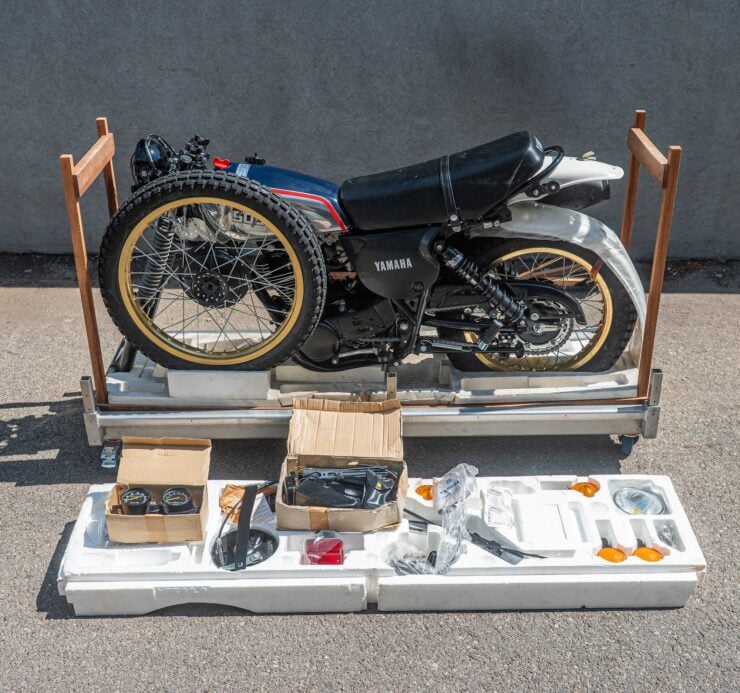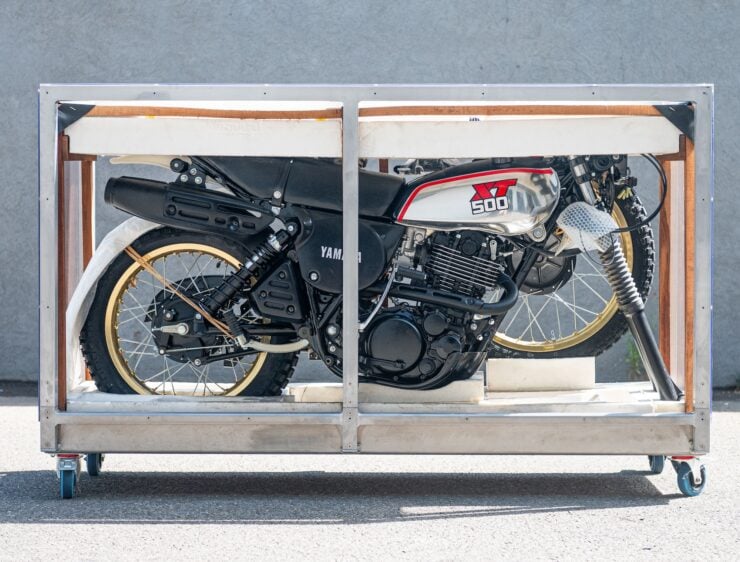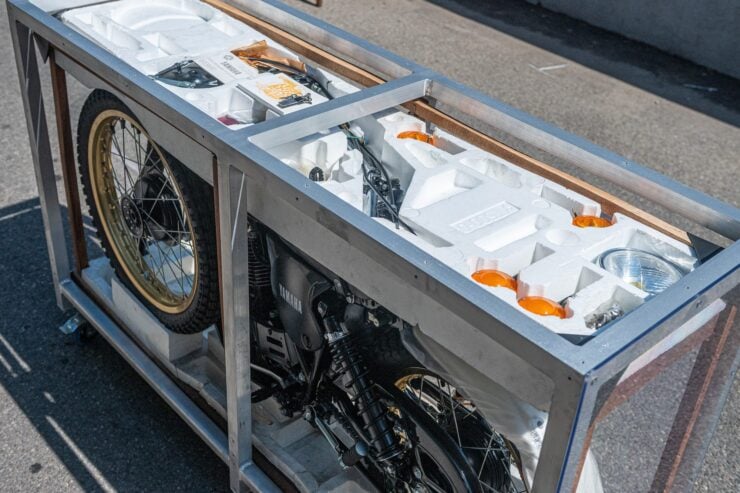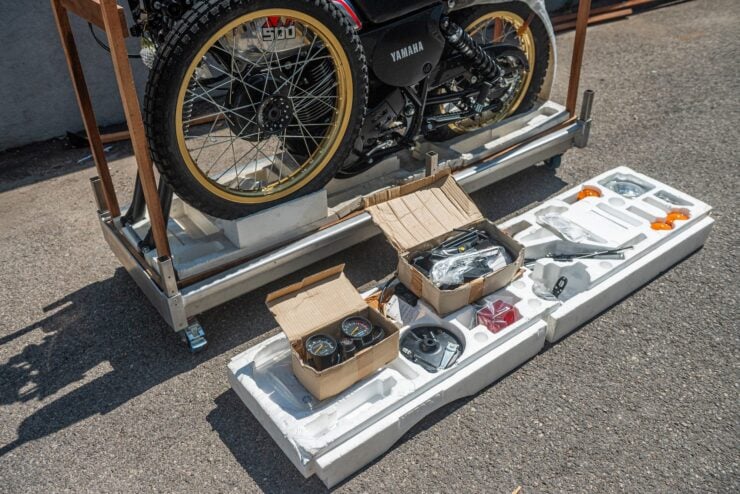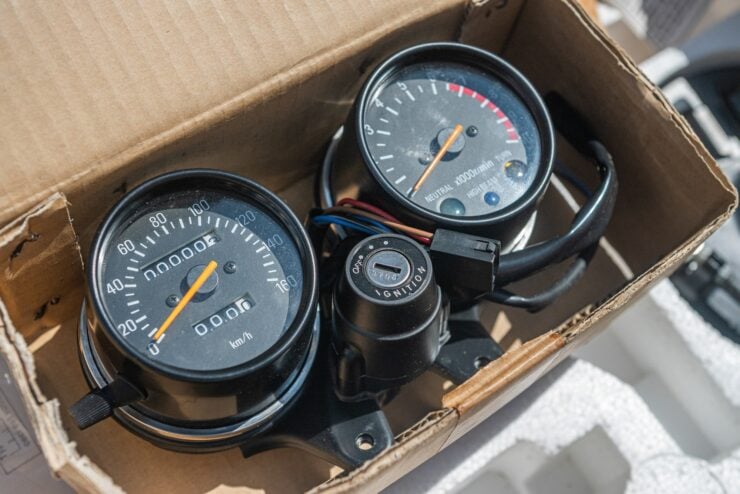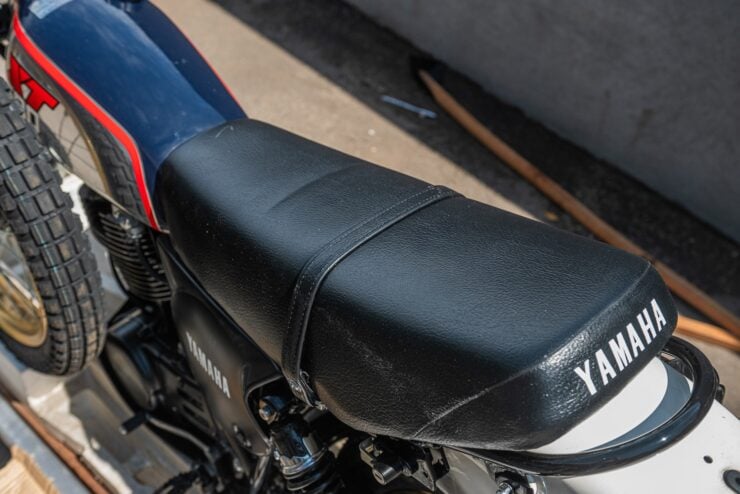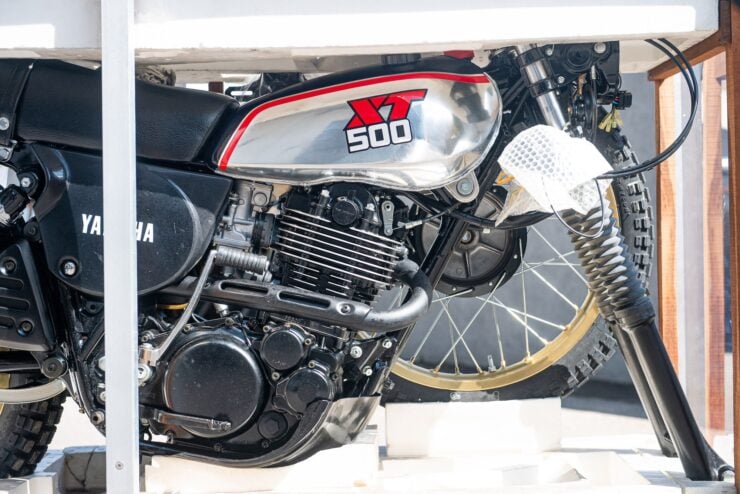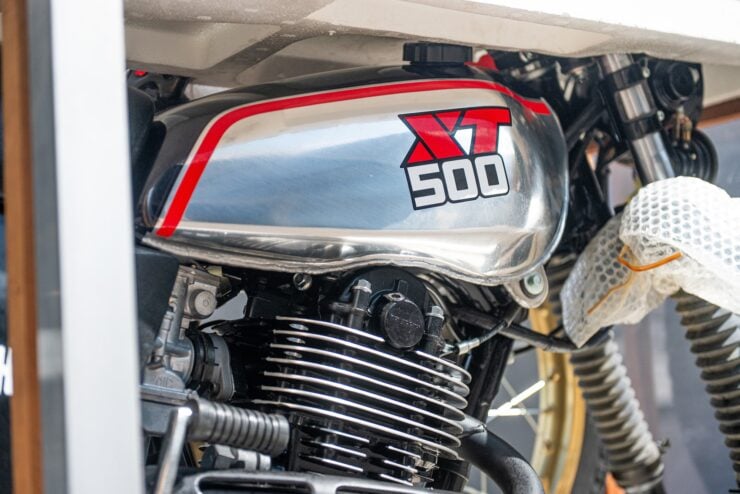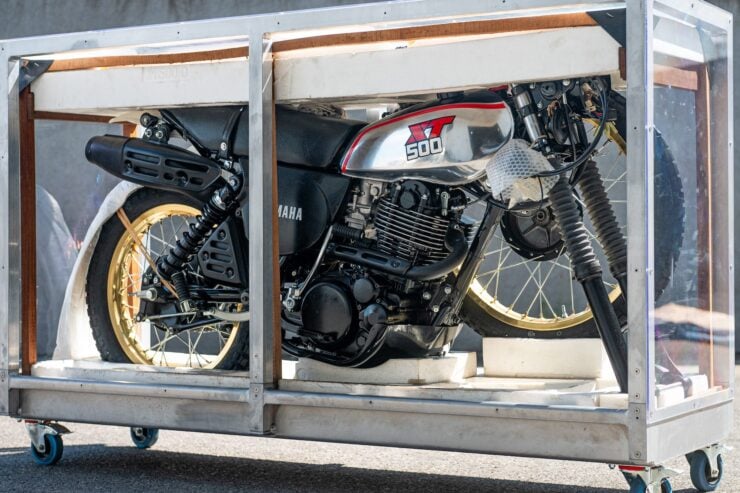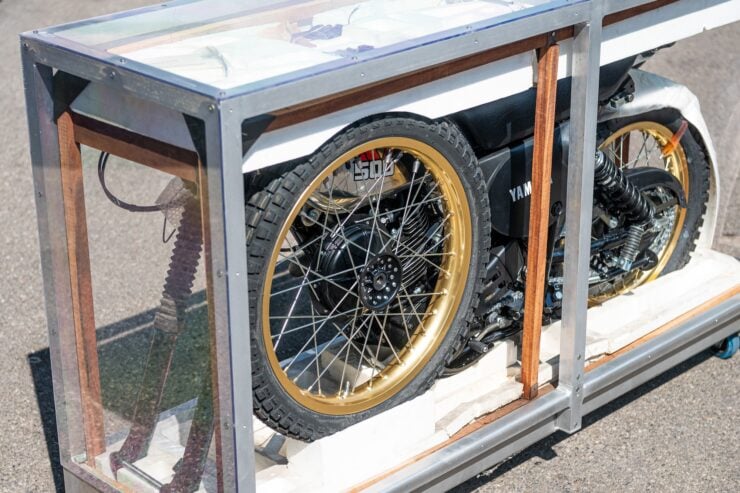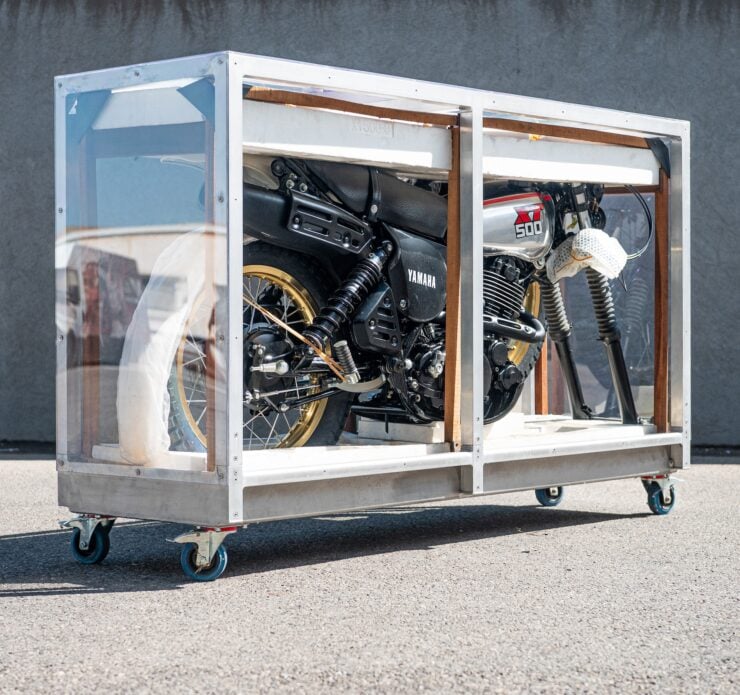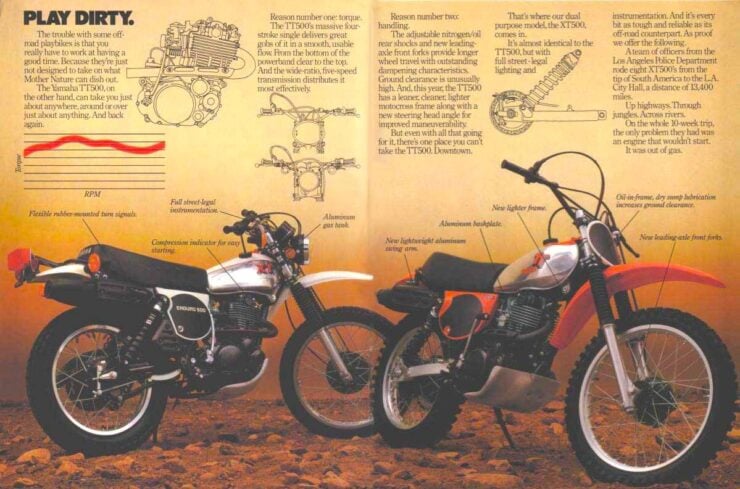This is a brand new 1988 Yamaha XT500 that remains in its factory crate. The XT500 is one of the most consequential dual sport motorcycles in history, having won the first two runnings of the Paris-Dakar Rally.
Those Dakar wins came in 1979 and 1980, both with legendary French rider Cyril Neveu in the saddle. The success of the XT500 came not from its power but from its simplicity and bulletproof reliability – these features have led to it being one of the most popular vintage dual sport bikes right through to the present day.
Fast Facts: A Factory Crated Yamaha XT500
- The Yamaha XT500, launched in 1976 after its 1975 Tokyo Motor Show debut, was Yamaha’s first larger-capacity four-stroke single. Developed alongside the TT500 and SR500, it had a 499cc SOHC single, dry-sump lubrication with oil in the frame, five-speed gearbox, twin rear shocks, drum brakes, and it weighed just 140 kgs (309 lbs).
- Known for its reliability and simplicity, the XT500 won the first two Paris-Dakar Rallies in 1979 and 1980 with Cyril Neveu, the Paris-Abidjan-Nice Rally, and Australia’s Finke Desert Race in 1978, 1979, and 1986. Bengt Åberg also rode a modified example in the 1977 500cc Motocross World Championship, winning the Luxembourg GP.
- The bike achieved major global success due to its tough, durable design, offering Japanese build quality with the feel of a traditional British “thumper.” Over 62,000 were sold in France alone before production ended in 1989, laying the foundation for Yamaha’s XT series, including later adventure models like the XT660Z Ténéré.
- The example shown here is a factory-crated XT500, originally delivered to Leuridan Motos et Cycles in Paris but never assembled or ridden. Believed to be a 1986 model and registered in 1988, it remains in its original wooden crate within a metal frame on caster wheels. RM Sotheby’s will offer it in Munich on October 18 with a $17,500–$29,000 estimate.
History Speedrun: The Yamaha XT500
Yamaha introduced a fresh idea at the 1975 Tokyo Motor Show and US dealer exhibitions, they called it the XT500. It was the company’s first large-capacity four-stroke single-cylinder motorcycle, born of a need among American desert riders for torque-rich, reliable machines suited to longer distance off-road rides.
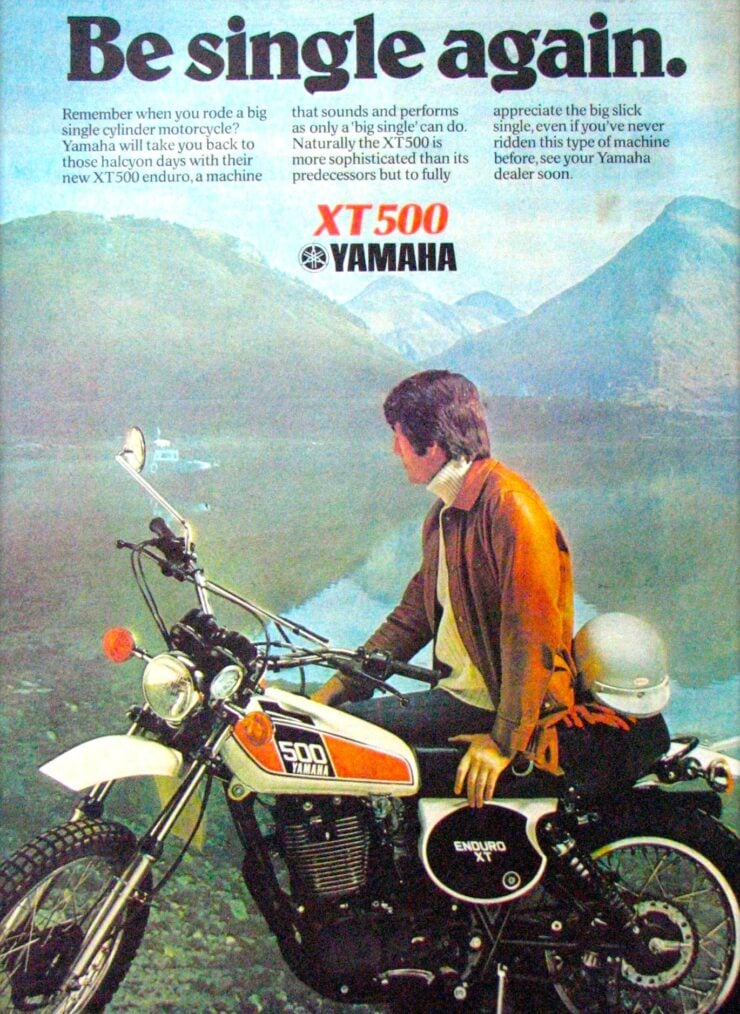

Yamaha had been known mostly for two-stroke bikes, the XT500 was their response to a new kind of demand and marked a well-timed shift in strategy. Its development, alongside the more off-road-focused TT500, led to the on-road SR500 as well – the same fundamental engine design powered three distinct models.
Yamaha engineers sent a prototype to the US and put it through more than two-and-a-half times the standard testing regimen under full-throttle in hot desert conditions. They were aiming to root out weaknesses long before the bike ever hit production – this insistence on real-world toughness would come to define the XT500.
Specifications: Yamaha XT500
By 1976 the XT500 was rolling off the production line. It was powered by a 499cc, air-cooled single-cylinder, single overhead cam motor with two valves, a single carburetor and five-speed gearbox.
The engine used dry-sump lubrication with oil stored in the frame, helping to cool the oil and saving the weight of a separate oil tank. Its chassis was simple but effective, with a single steel tube for the backbone and single downtube up front. It had twin rear shocks, long-travel forks, and front and rear drum brakes – all riding on a 21 inch front and an 18 inch rear wheel with knobby tires.
It was lightweight enough to handle easily – its seat height allowed easy foot placement for average-height riders, and it delivered enough grunt with 28 bhp and 27 lb ft of torque pushing a curb weight of just 140 kgs (309 lbs).
The Yamaha XT500 + Motorsport Glory
It’s one thing to be reliable on the road, but it’s entirely another to survive and win brutal endurance races across Africa. The XT500 did both. It claimed victory in the Paris-Abidjan-Nice Rally, and then went on to win the first two Paris-Dakar Rallies in 1979 and 1980. Riders like Cyril Neveu made history, and headlines, around the world.
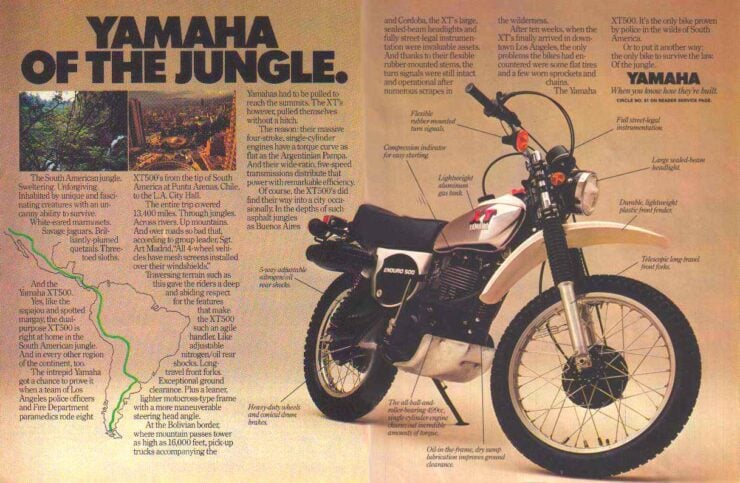


One highly-modified XT500 competed in the 1977 500cc Motocross World Championship, rider Bengt Åberg even won the Luxembourg Grand Prix and finished the season 9th overall. This was an incredible feat against lighter two-stroke competition.
This rally success wasn’t limited to Africa or Europe – in Australia’s iconic Finke Desert Race the XT500 was the winning bike in 1978, 1979, and again in 1986 – undeniable proof that its capabilities were truly global.
The XT500’s design leaned heavily on minimalist effectiveness rather than complexity. It rode that line better than anything else at the time. It offered Japanese build quality and reliability wrapped around that classic British “thumper” feel, appealing to a riding crowd wary of two-strokes and eager for a simpler ride with a much broader torque curve.
Production ran from 1976 to 1989 and Yamaha sold over 62,000 of them in France alone. The XT500 laid the groundwork for the entire XT line, from small 125cc models up to the adventure-focused XT660Z Ténéré.
Its approachable, adaptable formula made it an icon in its own lifetime, and Yamaha continued refining its lineage long after it stopped making the original twin-valve platform.
The Factory-Crated 1988 Yamaha XT500 Shown Here
The motorcycle you see here is an original Yamaha XT500 that was delivered to the Parisian motorcycle dealer Leuridan Motos et Cycles, but was never assembled or ridden. It now remains as one of the last “brand new” XT500s in the world.
As you would expect, it’s showing 0 kms on the odometer. The bike is believed to be a 1986 model, according to the UK-based Vintage Japanese Motorcycle Club, however it was road-registered in 1988 – remaining unridden.
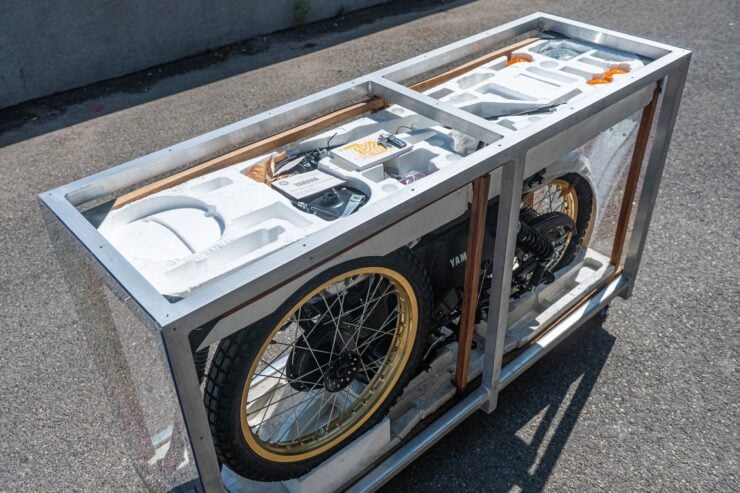


Looking at the images it’s sitting inside the original wooden shipping crate, which has now been surrounded by a metal crate which is on caster wheels for easy transport.
It’s now being offered for sale by RM Sotheby’s as part of their Munich Auction on the 18th of October, with a price guide of $17,500 to $29,000 USD. You can visit the listing here if you’d like to read more about it or place a bid.
Images: Loic Kernen ©2025 Courtesy of RM Sotheby’s + Yamaha


